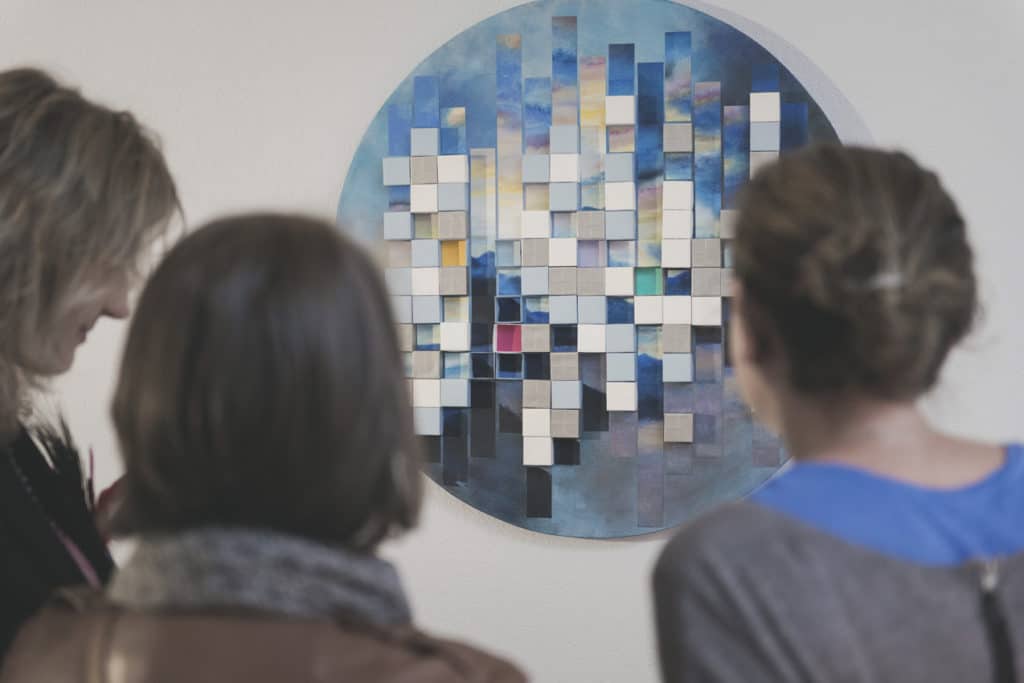
Design is much more than just the visual aesthetics of objects and spaces; it is the process of problem-solving, planning, and creating functional, meaningful experiences. Whether applied to graphic design, product design, interior design, or digital interfaces, design plays a central role in shaping how we interact with the world around us. From the user-friendly interface of a mobile app to the harmonious layout of a living room, design influences our everyday lives in profound ways.
The Essence of Design
At its core, design is about creating solutions that are both functional and aesthetically pleasing. It involves a deep understanding of the problem at hand, the needs of the end-user, and the technical constraints within which the designer must operate. Design is a multidisciplinary practice, often blending art, engineering, psychology, and sociology to deliver products and environments that serve a purpose while resonating with their users.
A good designer does not simply make things look beautiful; they ensure that the object or experience functions seamlessly and enhances the user’s life. This balance between form and function is what elevates design from mere decoration to a powerful tool for communication and problem-solving.
The Evolution of Design: From Craft to Innovation
The history of design is as old as human civilization. Early designs were driven by necessity—creating tools, shelter, and clothing for survival. Over time, design evolved to reflect cultural values, artistic trends, and advancements in technology. The Industrial Revolution marked a significant turning point in the history of design, as mass production made products more accessible and required designers to focus on efficiency and usability.
In the 20th century, design experienced a dramatic transformation with the advent of modernism, a movement that emphasized minimalism, functionality, and the use of new materials and technologies. Iconic designers like Charles and Ray Eames, Dieter Rams, and Bauhaus pioneers such as Walter Gropius and Ludwig Mies van der Rohe pushed the boundaries of form, focusing on simplicity and utility.
As technology has advanced, design has continued to evolve, especially with the rise of digital interfaces, user experience (UX) design, and web development. Today, design is at the forefront of innovation, driving trends in architecture, technology, branding, and communication.
Types of Design
Design is a broad field with various specializations. Here are some of the key areas where design plays a crucial role:
1. Graphic Design
Graphic design focuses on creating visual content for communication. Graphic designers use typography, imagery, and color to craft messages that are clear, engaging, and visually compelling. Whether designing a logo, a magazine layout, or a website interface, graphic designers ensure that the visual elements align with the message and evoke the desired emotional response. The rise of digital tools like Adobe Illustrator and Photoshop has significantly expanded the possibilities of graphic design, enabling designers to create intricate and innovative visual compositions.
2. Product Design
Product design involves the creation of tangible objects, from household items to technology. It requires a keen understanding of materials, ergonomics, and manufacturing processes. A product designer’s goal is to create objects that are not only aesthetically pleasing but also functional, durable, and easy to use. Companies like Apple have raised the bar for product design, where innovation in form and function goes hand in hand, creating products that are both beautiful and intuitive.
3. Interior Design
Interior design is the art of enhancing the interior spaces of a building to create environments that are aesthetically pleasing, functional, and conducive to the well-being of its occupants. Interior designers consider layout, furniture, lighting, and color schemes, often working closely with architects and clients to create personalized spaces that meet specific needs. Whether designing a cozy home, an office, or a public space, interior designers play a vital role in shaping the physical environments where people live, work, and relax.
4. Fashion Design
Fashion design is the creation of clothing and accessories that combine aesthetics, functionality, and individual expression. Fashion designers blend fabrics, colors, and cuts to create garments that reflect cultural trends and personal identity. From haute couture to streetwear, fashion design encompasses a wide range of styles and disciplines. The work of influential designers such as Coco Chanel, Yves Saint Laurent, and Alexander McQueen has elevated fashion to the level of art, where the garment becomes a form of expression and cultural commentary.
5. Web and UI/UX Design
Web design and User Interface (UI) / User Experience (UX) design focus on creating digital experiences that are both functional and user-friendly. Web designers create the visual layout of websites, while UI/UX designers ensure that users can navigate these sites easily and efficiently. This area of design has gained immense importance in the digital age, as companies increasingly rely on websites and apps to interact with their customers. The goal is to create an intuitive, seamless experience that meets the user’s needs while delivering a pleasing aesthetic.
6. Environmental Design
Environmental design focuses on the creation of physical spaces and structures that enhance the user’s experience and support human interaction. It blends architecture, urban planning, landscape design, and interior design to create environments that are functional, sustainable, and aesthetically pleasing. Environmental designers consider the human experience in both public and private spaces, creating environments that foster positive interactions and well-being.
The Principles of Design
Good design follows certain principles that guide the creation of aesthetically pleasing and functional solutions. These principles are used across all design disciplines and are essential in producing effective designs.
- Balance: Balance refers to the distribution of visual weight within a composition. It can be achieved symmetrically, asymmetrically, or radially, depending on the desired effect.
- Contrast: Contrast is the use of opposing elements, such as light vs. dark or rough vs. smooth, to create visual interest and emphasize important features of the design.
- Emphasis: This principle involves drawing attention to a focal point in a design, whether it’s a specific element, shape, or color that stands out.
- Unity: Unity ensures that all elements within a design work together harmoniously, creating a cohesive, unified whole.
- Proportion: Proportion refers to the relationship between the sizes of different elements in a design, ensuring they are visually pleasing and balanced.
- Rhythm: Rhythm in design creates a sense of movement by repeating certain elements, such as patterns, colors, or shapes.
The Impact of Design on Society
Design has a profound influence on the way we interact with the world, shaping everything from the products we use to the spaces we inhabit. Well-executed design can enhance efficiency, improve user satisfaction, and elevate the overall quality of life. Conversely, poor design can lead to frustration, confusion, and inefficiency.
Beyond functionality, design can inspire, provoke thought, and even challenge societal norms. Designers are increasingly using their skills to address global challenges, such as sustainability, accessibility, and social equality. For example, eco-friendly design practices are helping to reduce waste and carbon footprints, while inclusive design ensures that products and spaces are accessible to people of all abilities.
The Future of Design
The future of design is closely tied to technological advancements. As new materials and techniques emerge, designers are presented with opportunities to innovate in ways that were once thought impossible. Digital tools, artificial intelligence, and 3D printing are just a few of the exciting technologies transforming the design landscape. These innovations will continue to shape the way designers approach challenges, enabling them to create more efficient, sustainable, and personalized solutions.
As the world becomes more interconnected, the role of design will continue to evolve, playing an integral part in shaping the future of human experiences.
Conclusion
Design is a multifaceted discipline that blends creativity with problem-solving, aesthetics with functionality. Whether creating a product, a building, or a digital experience, design is about making the world a better place through thoughtful, intentional creation. Its impact reaches far beyond beauty—design influences how we live, work, and interact with the world. As new technologies emerge and societal needs evolve, design will continue to play a pivotal role in shaping the future, ensuring that it remains an essential force in human progress.
